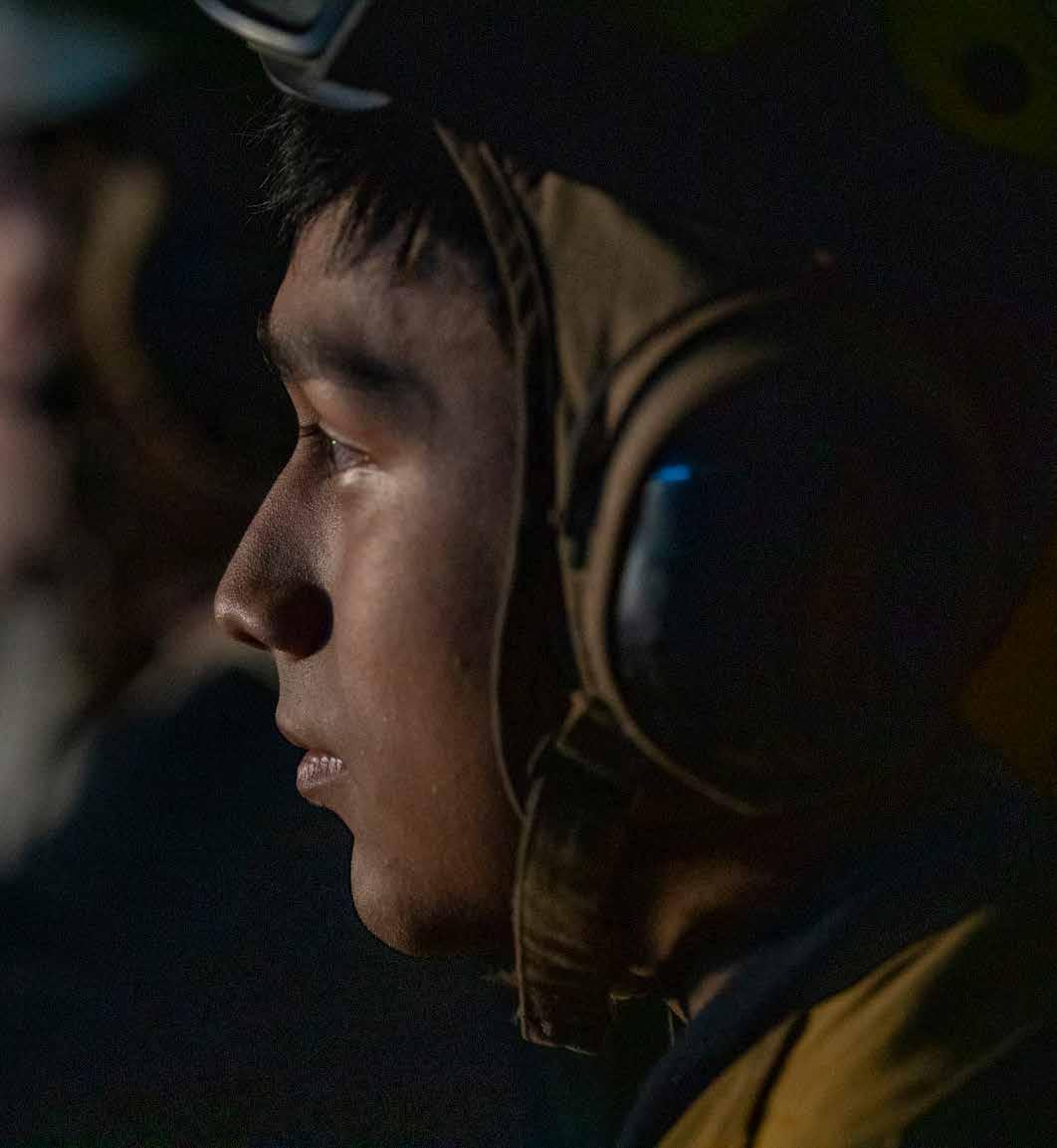
2 minute read
USS Bataan's Command Resilience Team
Leadership and command program coordinators of the amphibious assault ship USS Bataan (LHD 5), have come together to create Bataan’s Command Resilience Team (CRT).
Advertisement
The CRT includes Bataan’s leadership, starting with Executive Officer Capt. Bryan Carmichael, who leads the team, as well as department heads, and departmental leading chief petty officers.
“Resiliency is the ability to work through problems and still be able to fully function to support the team,” said Carmichael. “Using the resources available to keep you in the fight and focused on the mission, while fulfilling your duties as a leader, Sailor, brother, sister, mother, father, son or daughter.”
The CRT also includes representatives from command-wide programs and associations, such as the Command Managed Equal Opportunity (CMEO) program manager, who is responsible for training CRT members and managing the command climate assessment process, as well as the Coalition of Sailors Against Destructive Decisions (CSADD) , the Second Class Petty Officer Association, the First Class Petty Officer Association, the Command Career Counselors, the Drug and Alcohol Program Advisor (DAPA), and many more.
“We have every rank on the ship represented from very junior to captains,” said Carmichael. “It helps us better understand the issues affecting our sailors that senior personnel may not understand. The information from the team is not filtered and because of that we can help identify root causes of issues and try to work solutions without wasting a lot of time.”
Before the Command Resiliency Team started, there was the Command Assessment Team.
“Their only job was to conduct the command climate assessment,” said Senior Chief Fire Controlman Israel James, the Command Climate Specialist. “The Navy looked at the program and thought, ‘We can add all these different programs that take care of sailors, we can put them in one spot and they can cross-connect, and we can see if they can figure out causes for concerns across the command.’ If we can get ahead of it using each individual program as it relates to each other, we can be more proactive than reactive.’”
The team is designed with the idea to provide the commander with information and insight into the concerns of command personnel. They provide commanders with visibility of resilience trends across the command and a means to improve support programs and enhance overall command readiness.
“The CRT multiples what was already there,” said James. “Sailors know they can talk to the DAPA, talk to the chaplain, or the DRC, but when Sailors understand that all these programs are talking together to address their concerns – whatever the root causes are – it only benefits them more.” *










